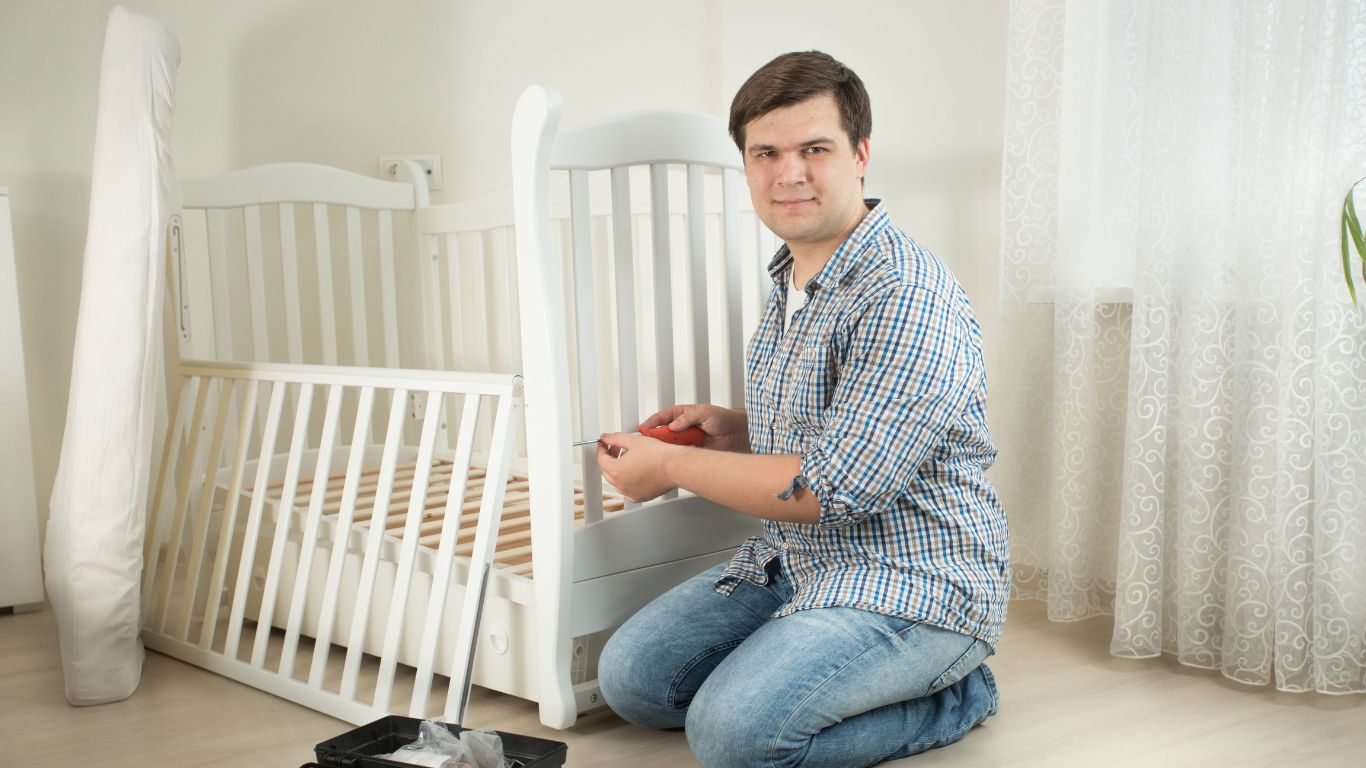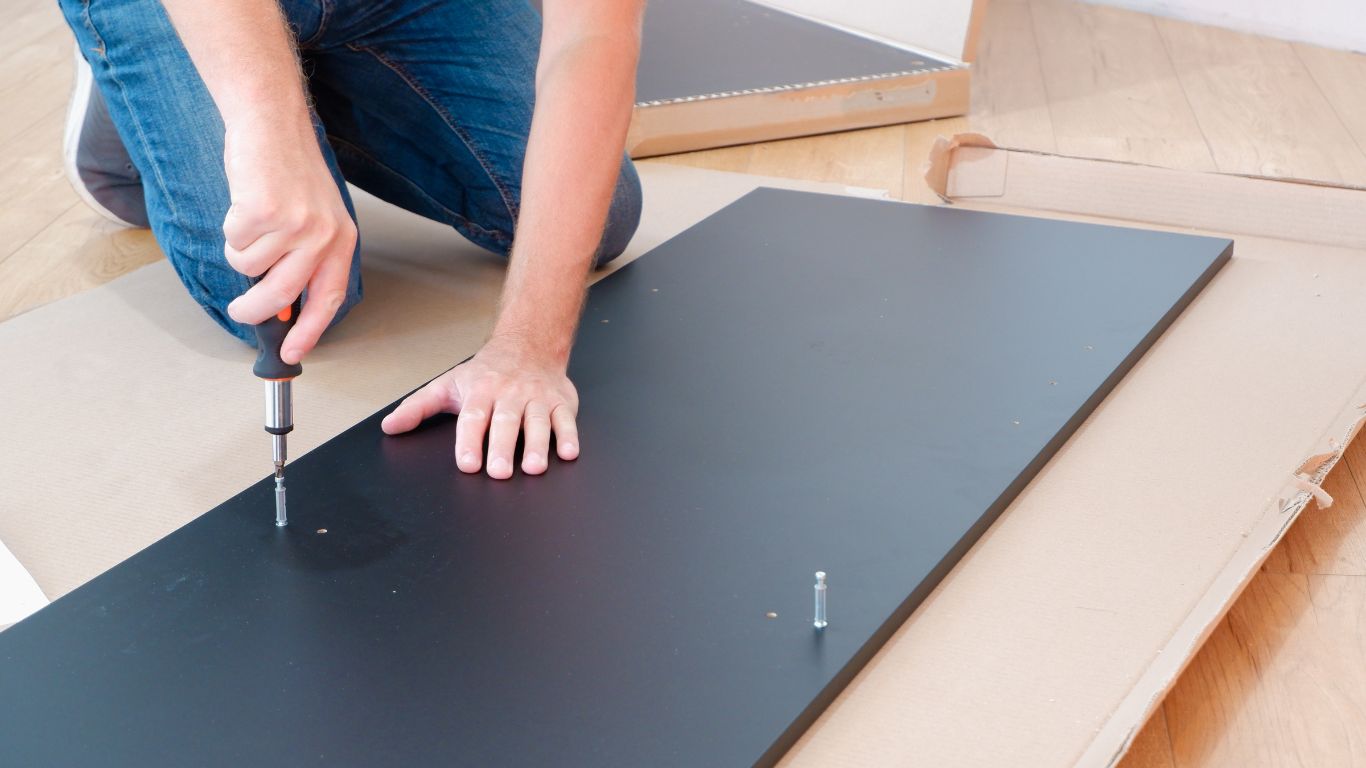Discover the secrets to effortlessly and securely disassembling furniture with our comprehensive step-by-step guide. Unlock the potential to save valuable time, space, and money by dismantling your furniture before a move.
-
- Do I need to Disassemble Furniture for Movers?
- Tools and Needed Supplies
- Step-by-Step Guide to Disassembling Furniture
- How to Disassemble Different Types of Furniture
- How to Reassemble Furniture
- Useful Tips and Considerations for Dismantling Furniture
Moving to a new home can be an exciting yet daunting task, especially when it comes to transporting large furniture items. One effective strategy to simplify the moving process is to disassemble your furniture before the move and reassemble it upon arrival. This comprehensive guide will provide you with step-by-step instructions, tips, and techniques to efficiently disassemble and reassemble furniture, ensuring a smoother and stress-free moving experience.
Why Disassemble Furniture?
There are numerous benefits to disassembling furniture. Not only does it make bulky items more manageable and lighter, but it also reduces the risk of damage during out of state moves and transportation. Furthermore, taking furniture apart simplifies the task of navigating through tight spaces, doorways, and staircases.
Do I need to Disassemble Furniture for Movers?
The decision on whether or not to disassemble furniture for movers depends on the service package you choose with the moving company. If you opt for the full-service option, such as with United Local Movers, they will handle the disassembly of all furniture items for you. This includes beds, cribs, dining tables, buffets, and any other pieces that require dismantling. They will ensure that everything is safely transported into the moving truck, making your moving day much easier and less stressful. However, it’s important to note that this is a more expensive option. If you prefer to save money and do it yourself, we have provided some helpful tips on how to disassemble furniture in our step-by-step guide. Use moving cost calculators to have an idea of the overall investment required.

Tools and Needed Supplies
Before beginning the furniture disassembly process for your long distance movers, gather the necessary tools and supplies:
- Screwdrivers: A collection of screwdrivers, including both Philips and flat-head, in a range of sizes.
- Adjustable Wrench: For handling nuts and bolts
- Allen Wrench or Hex Key Set: Frequently employed for the construction and deconstruction of furniture using hex screws
- Ziplock Bags and Labels: To securely store and clearly label screws, bolts, and small components
- Plastic Wrap or Bubble Wrap: Safeguard fragile components while maintaining organized hardware
- Furniture Blankets or Pads: protect your disassembled furniture pieces while on the move to ensure their safety and protection during transportation.
- Markers and Tape: For clearly identifying and organizing individual components
To learn more about must have items for out of state moves, check out our Moving Day Survival Kit Guide!
Step-by-Step Guide to Disassembling Furniture
1. Preparation and Planning:
Prior to commencing the disassembly process, it is essential to give the furniture a thorough cleaning to guarantee that every component is clearly visible and easily accessible. Take the time to carefully review the assembly instructions provided by the manufacturer or consider taking reference photos, as these will serve as helpful guides during the reassembly phase. Additionally, it is recommended to create a dedicated workspace that provides ample room for organizing and laying out the disassembled parts, ensuring a smooth and efficient process.
2. Gather Tools and Remove Cushions or Loose Parts:
Gather all the essential tools needed for the disassembly process and carefully remove any cushions, pillows, or loose parts from the furniture. It’s important to keep these items together and label them appropriately so that they can be easily reattached later on.
3. Identify and Remove Fasteners:
When preparing for your local move or out of state relocation, inspect the furniture thoroughly to locate any screws, bolts, nuts, or other fasteners that are keeping it together. Utilize the appropriate tools to cautiously remove these fasteners. Remember to store them in clearly labeled bags or containers, indicating which specific part they belong to.

4. Disassemble Large Sections:
For optimal convenience, consider breaking down larger sections of furniture into smaller, more manageable pieces. For example, you can separate bed frames into individual headboards, footboards, and side rails. It’s crucial to handle delicate or intricate parts with extra caution to prevent any potential damage during the disassembly process.
5. Wrap and Protect Fragile Pieces:
To ensure the safety and protection of delicate pieces or easily scratched furniture parts, such as table legs, glass tabletops, or ornate pieces, it is essential to use packing materials wrap them in a secure layer of plastic wrap or bubble wrap. By doing so, you can prevent any potential scratches or damage during the transportation process. Make sure to tightly secure the wrapping with tape for added security.
6. Store Hardware Securely:
Securely store all screws, bolts, nuts, and small parts in carefully labeled Ziplock bags or containers. It is important to keep these items together with their respective furniture pieces or in a clearly labeled box to prevent them from getting lost during the relocation process.
How to Disassemble Different Types of Furniture
How to Disassemble Couches, Loveseats, and Sofas for Moving
- Begin by removing the upholstery from your furniture, including pillows, cushioning, and arm covers, to prepare for disassembly.
Begin by removing the upholstery from your furniture, including pillows, cushioning, and arm covers, to prepare for disassembly.
- Next, detach the arms of your couch. Carefully unscrew each screw from each arm piece. Once both arms are removed, store them in a safe place to ensure they don’t get lost or dirty before moving.
- Using a screwdriver, proceed to remove the frame of the couch. Unscrew each screw that holds the frame and back support together.
- Place small pieces like screws and bolts in a plastic zip bag for safekeeping. Wrap the remaining furniture in stretch wrap and moving blankets to provide extra security during transportation.
How to Disassemble China and Display Cabinets for Moving
- Take out any movable components, such as shelves, doors, and drawers. If your cabin has glass doors, prioritize removing them first, along with any other delicate glass parts, before proceeding to remove the hutch.
- Once you have successfully removed the doors, shelves, and drawers, it’s time to tackle the hardware securing the hutch.
- With the hardware out of the way, you’re almost done with the challenging part. The only remaining task is to carefully remove the hutch with the help of a partner.
- Remember to securely wrap all the disassembled parts in stretch wrap and blankets for a safe and secure transfer.
How to Disassemble Tables and Desks for Moving
- To begin the disassembly process, start by loosening the screws. This will allow you to remove each leg assembly and delicately separate the leg braces. Using a screwdriver, carefully back out the screws until they are fully removed.
- Next, it’s time to take off the apron. In some tables, the legs are attached to the table apron, which is secured to the table itself. By removing the apron, you can easily access the legs and continue with the disassembly process.
- Now, unscrew the legs from the tabletop. Flip the table over to locate the bracket that is fastened to the underside of the tabletop. Once you’ve found it, begin removing the legs by unscrewing them from the bracket or removing the screws that were securing the bracket to the table.
By following these steps, you can safely and efficiently disassemble your table, ensuring that all the parts are ready for transportation.
How to Disassemble Beds for Moving
- To begin the process, start by stripping the bed and removing all the linens, sheets, covers, and mattresses.
- Next, unscrew the footboard and headboard from the bed frame. If there are rails, be sure to remove the slats as well.
- Once you have collected all the screws, bolts, and smaller items, place them in a zip bag for safekeeping.
- Finally, wrap the bed and its components, including the mattresses and cushioning, in stretch wrap and blankets to protect them during transportation.
How to Disassemble Wardrobes and Dressers for Moving
- Begin by emptying the wardrobe and giving it a thorough cleaning.
- Remove any removable parts, such as drawers and shelves, without the need for unscrewing.
- Use a screwdriver to unscrew the hinges and carefully remove the doors from the side panels.
- Unscrew the support brackets from both sides and take off the clothes rail.
- Lay the wardrobe on its back, with the backside facing the floor. Wardrobes typically have dowel joints that connect the top and bottom. Gently pull the joints apart and remove the side panels from the back..
How to Reassemble Furniture:
Once you arrive at your new home with the help of your reliable moving company, it’s time to put your furniture back together. Follow these simple steps to reassemble your pieces and make your new space feel like home again.
1. Lay Out Parts and Hardware:
Prepare your workspace and meticulously arrange all the disassembled components, ensuring that you have everything necessary for the reassembly process. Utilize reference photos or the provided assembly instructions as a reliable guide to ensure a seamless and successful reassembly.
2. Follow Reassembly Steps:
Take your time and meticulously follow the process of reassembly, connecting each component using the labeled hardware and tools. Pay close attention to detail and double-check the assembly to guarantee a perfect fit.

3. Adjust and Secure:
Begin by loosely assembling the furniture, allowing for necessary adjustments to ensure proper alignment. Once aligned, securely tighten all screws, bolts, and nuts, taking care to avoid over-tightening that could potentially strip threads or cause damage to the parts.
4. Reattach Loose Parts:
Reattach any removable cushions, pillows, or loose components that were removed before disassembly. Ensure everything is properly secured in place.
5. Test Stability and Functionality:
Once you have successfully reassembled your furniture, it is crucial to ensure its stability and functionality. Take the time to carefully test for any wobbling, loose parts, or alignment issues. Make any necessary adjustments to achieve optimal stability and performance.
Useful Tips and Considerations for Dismantling Furniture
- Organization is Key: Properly labeling and organizing the hardware and parts will streamline the reassembly process, making it a breeze to put your furniture back together.
- Take Photos: Capture photos while disassembling your furniture to serve as a visual guide when it’s time to put everything back together.
- Protect Fragile Parts: Safeguard fragile components by enveloping them in bubble wrap or cushioning material, providing an extra layer of protection during transportation.
- Keep Manuals: Keep the manufacturer’s assembly instructions handy to serve as a useful reference when putting your furniture back together.
- Ask for Help: If you find yourself dealing with furniture pieces that are particularly heavy or intricate, it’s highly recommended to enlist the help of professional experts for the disassembly and reassembly process. Their expertise and experience will ensure that these challenging pieces are handled with care and precision, giving you peace of mind during your move.
- Extra Hands are Welcome: We don’t recommend disassembling big and bulky items on your own. Several furniture disassembly steps need at least two pairs of hands to be effectively completed. Therefore, be sure to seek someone you can trust for help; this person could be a friend, family member, neighbor, or coworker.
- ZipLocks are a Must: A multitude of screws, bolts, and various other furniture components will inevitably be scattered throughout your living space as soon as you begin the disassembly process. Failing to utilize Ziplock bags can quickly lead to a chaotic situation as these small parts can easily become lost or misplaced.

Conclusion
Disassembling and reassembling furniture during a move can be a challenging task, but with proper planning, organization, and the right tools, it becomes a breeze. By taking the time to dismantle your furniture carefully and reassemble it accurately, you not only simplify the moving process but also ensure that your furniture arrives at your new home safely and remains functional. Remember, patience and attention to detail are crucial for a successful DIY furniture disassembly and reassembly.
Ready to start the process of your next move? Don’t wait to fire professional movers nearby, get started researching moving companies and pricing now. Request a free moving quote and we’ll get back to you today!




